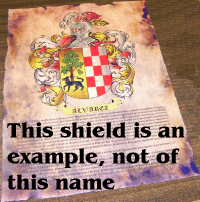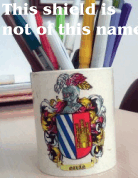And here we make available to students of the family name Pagan an important bibliographical information that collects its heraldic and genealogy, that are a beginning of face to the study of this family.
SEVEN things you should know about the family name Pagan:
1) The origin of the family name Pagan.
2) The meaning of the family name Pagan.
3) The coat of arms and crest.
4) The bibliography
5) The nobility of the family name Pagan.
6) The prominent persons of this family.
7) The history of the family name Pagan.
8) Do you know what heraldic drawings mean?.
The family name Pagan has a Spanish coat of arms certified by the Chronicler and King of Arms Don Vicente de Cadenas y Vicent.
It is known that the Pagan have or have been established, among other places, in:
* Canary Islands (Spain).
* Estremadura (Spain).
* Catalonia (Spain).
* England, Scotland, Wales or Ireland.
* Italy.
Bibliography that collects the history and the coat of arms for the family Pagan:
* Repertorio de Blasones de la Comunidad Hispanica, by the Spanish King of Arms Don Vicente de Cadenas y Vicent.
* Apendice al Repertorio de Blasones de la Comunidad Hispanica, by the Spanish King of Arms Don Vicente de Cadenas y Vicent.
* Armorial General by Johan Baptiste Rietstap. Contains blazons, descriptions and drawings of coats of arms, crests, origins of family names and nobility
* Nobiliario Espanol, by Julio de Atienza.
* El Solar catalan, valenciano y balear, by Garcia Carraffa.
* Enciclopedia Hispanoamericana de Heraldica, Genealogia y Onomastica, by Arturo and Alberto Garcia Carraffa.
* Nobiliario de Extremadura, by Adolfo Barredo de Valenzuela y Arrojo, and Ampelio Alonso de Cadenas y Lopez.
* The General Armory of England, Scotland, Ireland and Wales, by Sir Bernard Burke, King of Arms.
* Dizionario storico-blasonico delle famiglie nobili e notabili italiane estinte e fiorenti, by Gofredo di Crollalanza.
* Los Apellidos en Canarias, by Carlos Platero Fernandez.
* Blasonario de la Consanguinidad iberica.
Are you proud to belong to your family?
Do you want to know and have something important related to your family?. Click here
This name is the SYMBOL OF A FAMILY. If you have been invited to a wedding, event, meeting or anniversary,
make a GREAT GIFT FOR WEDDINGS, ANNIVERSARIES and events..
We put at your disposal the heraldic, the coat of arms and crest for this family name in various formats: The images that appear here are examples and none of them belong to the coat of arms for the name Pagan:
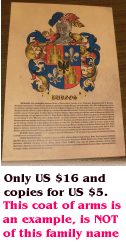
Parchment with the coat of arms, origin and history for the family name Pagan. Very cheap.
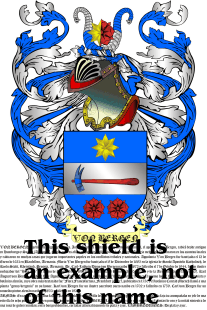
Coat of arms for Pagan and the history and origin for the family name Pagan in JPG or Vectorial files as Corel-Draw, AI, WMF, etc.
The family Pagan appears in the "General The Armory of England, Scotland, Ireland and Wales" written by Sir Bernard Burke appeared for the first time in the year 1842. This book contains about 60,000 names as Pagan and are the most comprehensive Collection of Arms, including the Bearings Armorial of Noblemen and Gentlemen of the British Empire, and diverse coats that were seen in churches, familiar mansions, tombs, etc. This book is very valued by who investigate on its ancestors and want to conserve their memory, by means of the history of its well-known actions and the representation of its symbols. Therefore, the name Pagan is from England, Wales, Scotland, Ireland, or radicated in some of these countries.
The Blasonario of the Iberian Consanguinity, where apper the heraldry of Pagan, consists of 7 volumes, starting the first in the year 1979 and the last in the year 1997, being its authors Ampelio Alonso de Cadenas, the King of Arms Don Vicente de Cadenas y Vicent (maximum authority of Spanish heraldry) and Liliana Ruiz Carrasco. It compiles a set of coats of arms and crests from different Spanish archives, others from armor stones, many from military passports and more from nobility, such as the name Pagan corresponding to a line whose origin or location is indicated, but without specific attribution to a specific family. It includes family names as Pagan of an extensive universal geography but that were part of the Iberian Community.
The coats of arms and family crests with meaning for the family name Pagan are collected in the Armorial General by Johan Baptiste Rietstap, this work is the greatest work of heraldry ever written and drawn, with more than 100,000 family names from around the world (English, Scotish, Welsh, Spanish, French, Italians, Poles, Portuguese, Dutch, etc.), among which is the name Pagan, arranged alphabetically, and DRAWN, including a heraldic handbook with drawings, a complete glossary of terms, a supplement and an appendix. Complete description the coat of arms Pagan, and origin for the family name Pagan, nobiliary titles of the family name Pagan and of the concession dates. The text where the family name Pagan appears is in the second edition, expanded and revised from 1884-1887.
The family crest and coat of arms of Pagan appears in Rietstap Armorial General that is a multi-volume work on the coats-of-arms of the world; it is both monumental and without equal, and is the most exhaustive undertaking of its kind. The Armorial General is the most authoritative work on the coats-of-arms in the world. The descriptions of the arms cover those of more than 100,000 families, included Pagan alphabetically arranged and accurately described.In addition to a full description of the arms for Pagan, most entries identify the nationality of the arms bearer, titles of Pagan, and the date his title was conferred. The basic text was established with the publication of the second edition, corrected and enlarged, of 1884-1887. This most important reference work contains the shields of thousands of Coats of Arms covering the whole world, arranged alphabetically under surnames, as Pagan.The very complete history and heraldry of the family name Pagan appears in the big "Enciclopedia Hispanoamericana de Heraldica, Genealogia y Onomastica" written by brothers Arturo and Alberto Garcia Carraffa, and continued by Endika de Mogrobejo. There are more than 100 volumes that occupy this Encyclopedia where we can find the family name Pagan. They are arranged alphabetically, although with additions at the end of many volumes. There are more than 17,000 names, including Pagan.
One of the most distinctive qualities of heraldry is the use of a limited palette of colours and patterns, usually referred to as tinctures. These are divided into three categories, known as metals, colours, and furs.
Next we are going to see the meanings of three tinctures:
1) SABLE: Black color that symbolizes Prudence, Sadness, Rigor, Honesty and Obedience.
2) AZURE: Blue color that symbolizes Justice, Zeal, Truth, Loyalty, Charity and Beauty.
3) OR (Gold): Nobility, Magnanimity, Wealth, Power, Light, Constancy and Wisdom.
Next lets look at the characteristics of some figures that we can find in heraldry and crests:
* SWAN: The Swan, by the tradition that he sings sweetly when he is about to die, means Ancient Nobility, without stain of any kind, who dies courageously executing glorious undertakings.
* LOZENGE: The Lozenges symbolize Constancy.
* WATER: The Water is a symbol of Enlightened Wisdom, of Virtuous Mood, and can also symbolize domain extension.
* COMET: The Comet symbolizes a Brave Courage to prevent in time, without fear, future grievances.
* LIZARD: The Lizard is a symbol of Fidelity and Hobby, for which it shows the man.
* EYE: The Eye is a symbol of Ingenuity and Capacity, if both are painted it symbolizes Vigilance and Care.
* SALTIRE: The Saltire symbolizes the Banner or script of the leader undefeated in combat.
* OLIVE: The Olive Tree is a symbol of Peace, due to the perennial green of its leaves, it also means Immutable Courage against adverse fortune.
* The family name Pagan appears in the list of last names of Heraldry & Crests so its complete history, crest and coat of arms or heraldic shields can be known on his website: http://www.heraldrycrests.com/
Heraldry for family name Pagan as well as its history is at your disposal here: Heraldry, history, origin, crest and coat of arms of the family name Pagan
Related Words: Pagan family crest | Origin of the name Pagan | Genealogy of the family Pagan | Heraldry of the name Pagan | Coat of arms of Pagan | Genealogy of the Pagan | Origin of the Pagan | Meaning of the name Pagan.

Images of some books referred, with information of the family name Pagan:
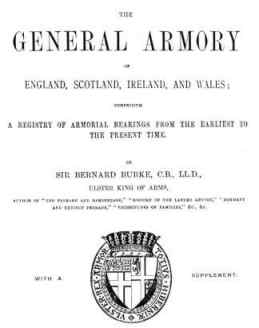
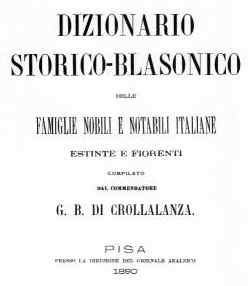
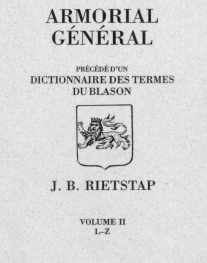
All the information about the surnames that are collected in this web site are based on verified bibliography.
Origin of family name, history and coat of arms/crests
